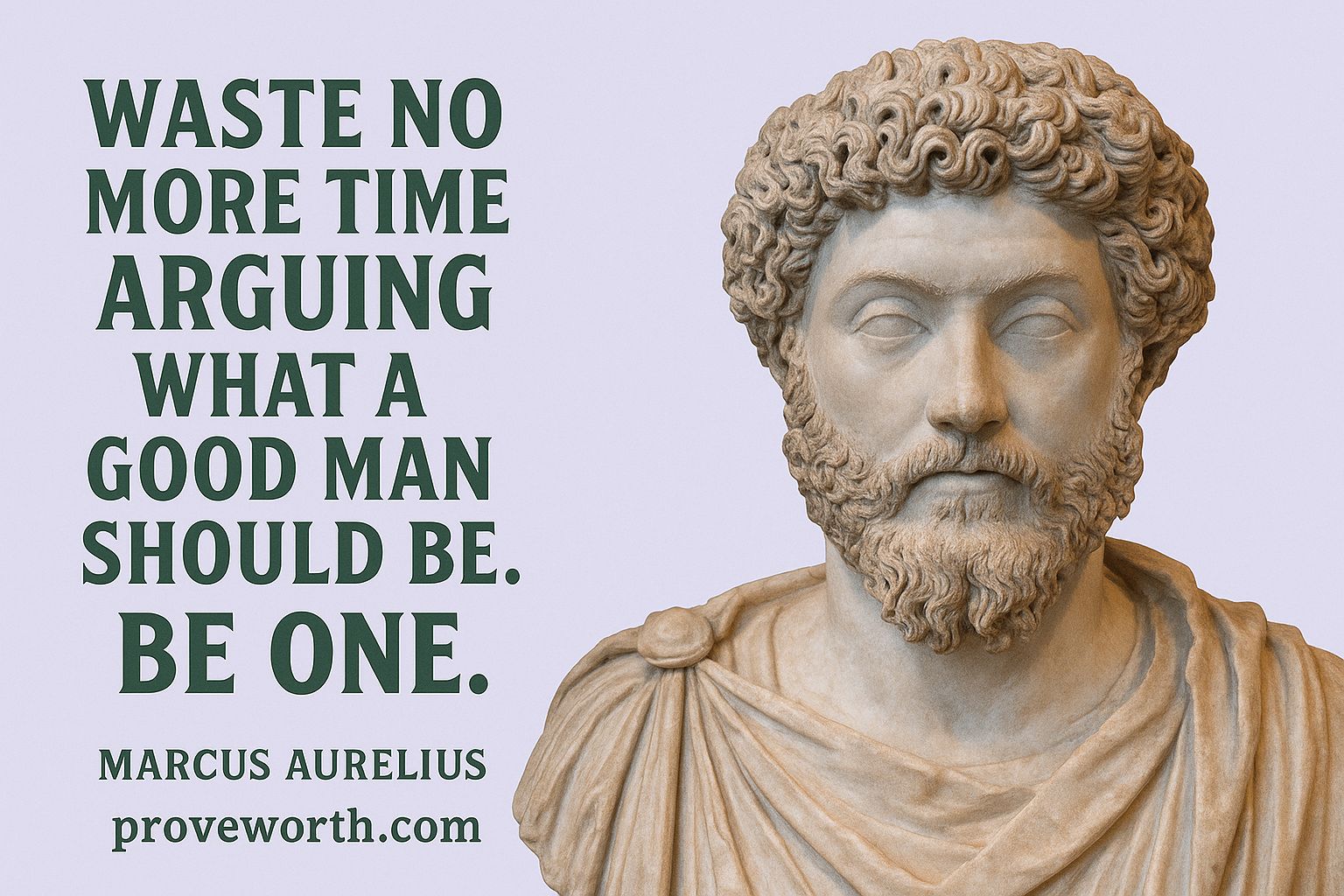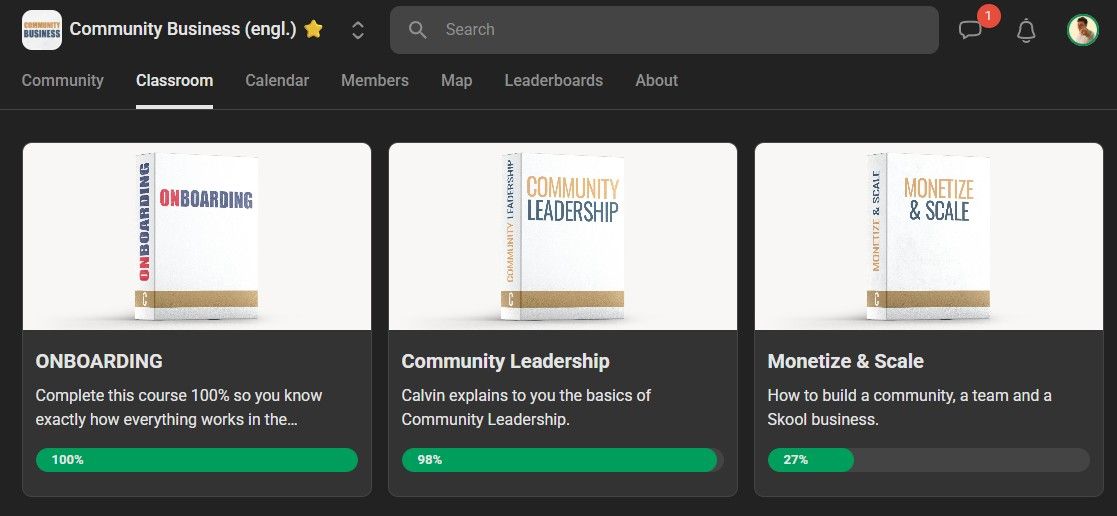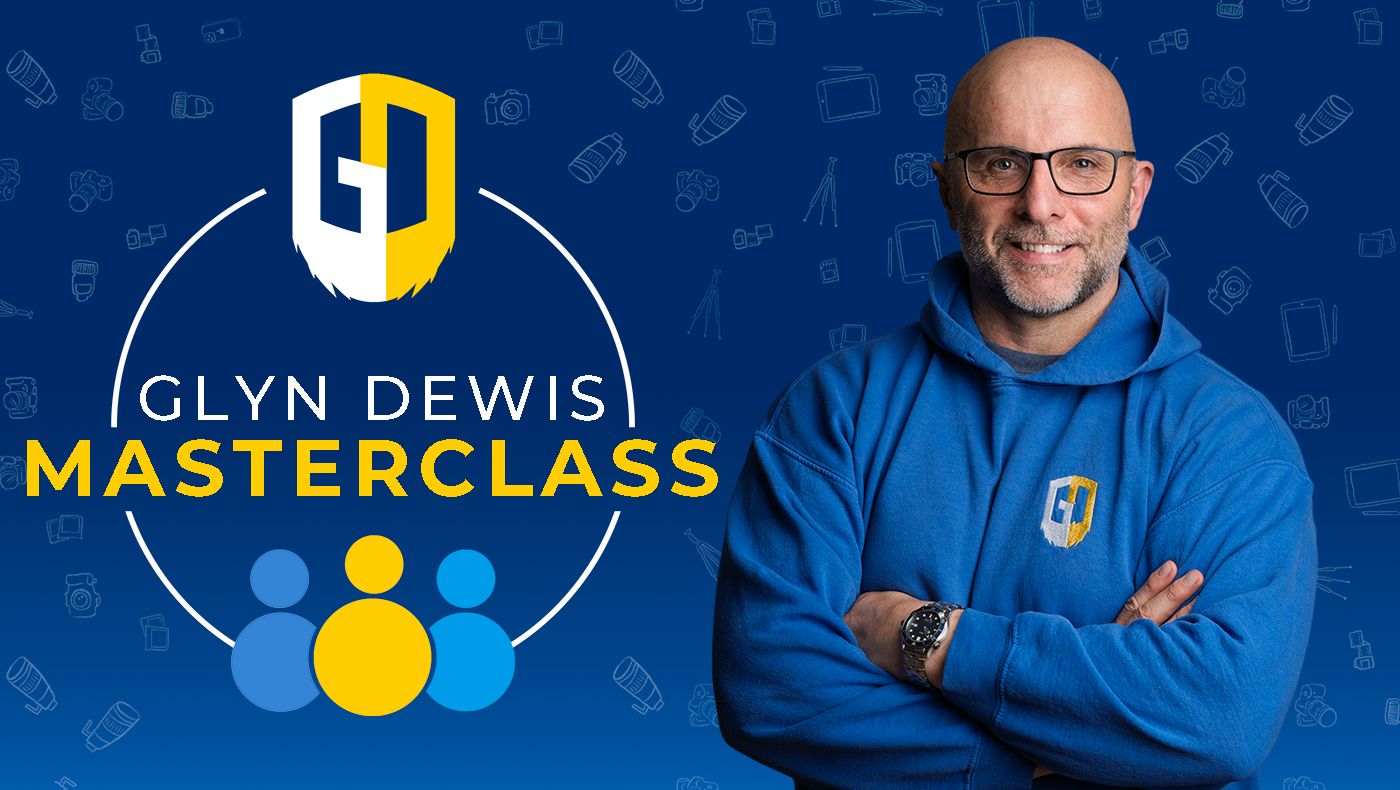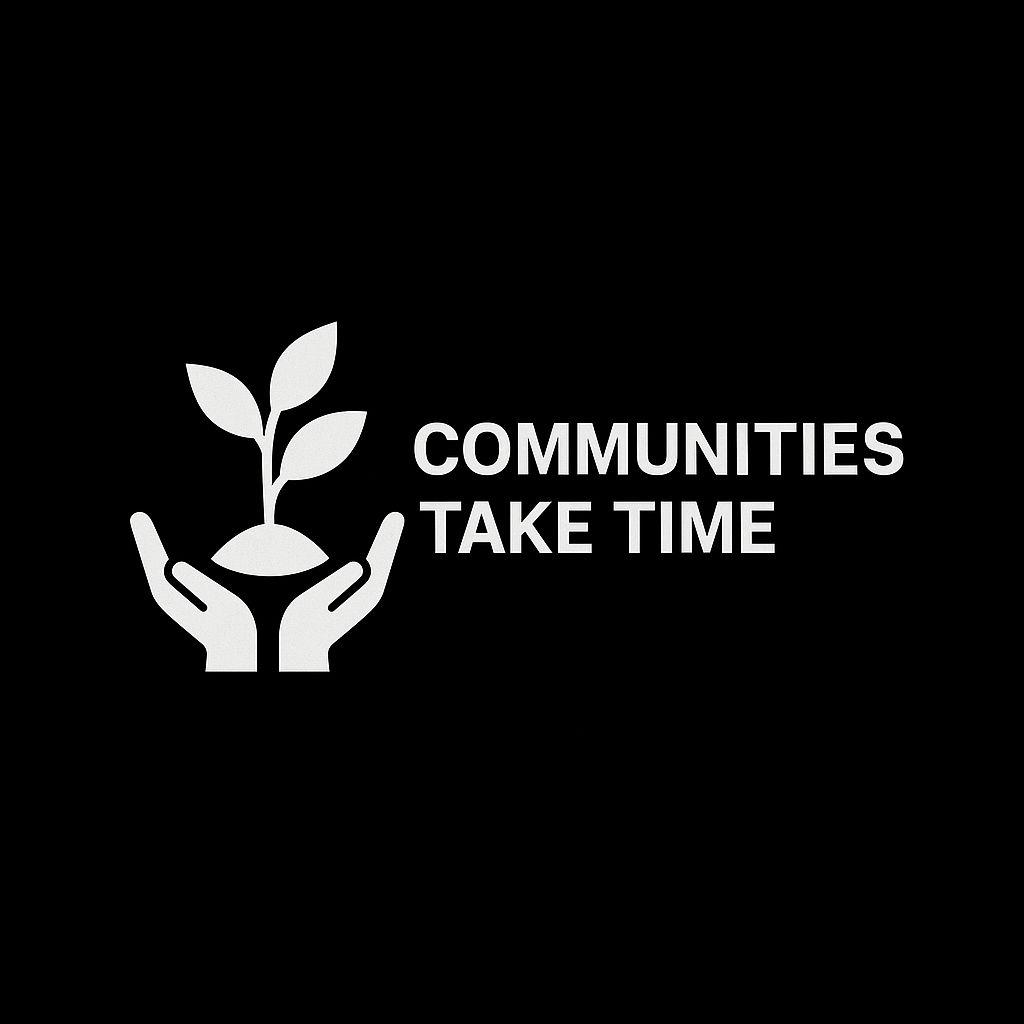When joining a community, it’s easy to get swayed by polished marketing or glowing testimonials. But these rarely tell the full story. This guide breaks down what we chose as our five-pillar framework to evaluate communities effectively:
- Transformation: Does the community deliver real, measurable outcomes and personal growth? Look for members achieving tangible results and mindset shifts.
- Integrity: Are promises kept? Honest marketing, clear policies, and consistent leadership build trust.
- Community Health: Is it a safe, supportive space? Healthy communities encourage open discussion, respect, and meaningful connections.
- Design and Experience: Is the platform user-friendly? Clear onboarding, organized resources, and intuitive tools make participation easier.
- Reputation: What do members and former members say? Genuine experiences shared on platforms like Reddit or Twitter reveal the truth behind the marketing.
Use these pillars to identify communities that align with your goals, avoid common pitfalls, and make informed decisions.
Transformation: Does This Community Create Real Change?
When I first started evaluating communities, I focused more on the promises founders made than on the actual outcomes members achieved. Over time, I realized that real transformation isn’t about flashy mission statements or polished success stories. The stuff people care about is whether other people’s lives (often those they can compare themselves to) genuinely change in meaningful ways.
People join communities to grow - whether it’s launching a business and learning Meta ads or learning a new skill like Bachata. People invest their time and energy because they believe change is possible.

The Lion Mentality community by Calvin Hollywood is a great example of a community based on people who want to make real meaningful change in their lives.t
Through structure, support, and accountability, these communities ensure that members not only aspire to grow but actually see tangible results. This clarity of purpose is what separates empty promises from genuine progress.
What to Look for? Signs of REAL Transformation
Transformation reveals itself in two key ways: tangible results and mindset shifts. The most impactful communities deliver both, making progress visible while fostering internal growth.
Tangible results are often easier to measure. Look for members who can point to specific achievements, like mastering new skills, starting businesses, or building lasting habits. These outcomes show that the community delivers on its promises.
Mindset shifts, however, are just as important, even if they’re harder to quantify. Pay attention to how members talk about themselves and their challenges. Are they more confident? Are they tackling bigger goals? Have they moved from a fixed mindset to a growth mindset? As Cyril Picard (a Medium writer talking often about the future) put it, “The way we perceive our abilities and challenges can profoundly shape our journey”.
One of the clearest signs of transformation is when members who started as beginners evolve into mentors for others. This reflects not just skill development but also a confidence shift that enables them to guide and inspire newer members.
Concrete Results That Matter
The best communities track progress in ways that highlight meaningful change. Here are just a few examples of the kinds of results that demonstrate true transformation:
- Skills and career growth: Members should show measurable improvements in knowledge and career opportunities. In a health-focused community project, participants improved their knowledge scores by 3.45 points, attitudes by 6.45 points, and behavior scores by 2.72 points. While this example is from a health perspective, the principle applies to any learning-focused community - progress should be clear and measurable.
- Behavioral changes: Beyond one-time achievements, lasting transformation often comes from new habits, overcoming limiting beliefs, or consistently taking actions that once felt out of reach. These changes tend to build over time, creating a lasting impact.
- Engagement shifts: A great indicator of growth is when members who were initially quiet start actively participating and helping others. When someone moves from asking simple questions to sharing their own insights, it’s a clear sign of personal and collective growth.
My Bachata Experience: Spotting Transformation in Action
One bachata (Latin sensual dancing) community I observed stood out for the way it systematically created an environment where dance transformation was almost guaranteed. It wasn’t about a fancy curriculum or either of the founder’s reputation - it was about the conditions they built for growth.

Founders Patrick and Johanna created Fuze to give the bachata community real guidance.
Here’s what made the Fuze community special:
- Tracking progress visibly: Members regularly shared "before and after" dance homework - not just of their results, but of their thought processes. People went from asking, “Can I dance this way?” to confidently asking, “How can I dance better?”
- Celebrating small wins: Patrick and Johanna didn’t just spotlight major achievements. They made a point of celebrating incremental progress, which helped members stay motivated and recognize their own bachata growth, even when it felt slow.
- Connecting efforts to purpose: Members were encouraged to align their homework with their deeper values and personal growth on their dance journey. This made their efforts feel meaningful, not just productive. When people see their work as aligned with their personal goals, they’re more likely to stay engaged and committed.
What struck me most was how contagious transformation can be. When members saw others achieving results, it didn’t just inspire them - it empowered them. Patrick and Johanna giving feedback publicly on everyones homework made it so that the community could learn from one another.
They created a sense of proof that change was possible for anyone willing to engage. That proof became a self-reinforcing cycle, motivating members to push themselves further.
The biggest lesson I’ve learned is that transformation is about crafting an environment where growth becomes the norm. Now, when I evaluate communities, I look for clear growth pathways, systems that track and celebrate progress, and evidence that members evolve from passive participants to active contributors, sharing and building collective wisdom.
Integrity: Are Promises Actually Being Kept?
After years of observing communities, one thing has become clear: integrity is key. So often in the online information and training space there’s a big gap between what’s promised and what’s delivered. The communities that stand the test of time are led by individuals who consistently follow through on their commitments, no matter how small.
I’ve seen many communities start strong only to falter when leaders fail to meet their own promises. Some might pledge weekly live sessions but only deliver them sporadically, or advertise personalized feedback while offering nothing more than generic responses. These kinds of missteps quickly erode trust and undermine the very foundation of a community.

Ole’ Marcus has my favorite quote on integrity. Sometimes simple is best.
Integrity is the bedrock of everything else. When members trust that leaders will keep their word, they’re more likely to engage, share openly, and invest in their growth. Without trust, even the most polished content or sophisticated systems lose their impact.
Clear Marketing and Fair Policies
A community’s integrity is often evident in how it presents itself to potential members. Honest communities don’t overpromise or bury important details in the fine print. They’re upfront about what members can expect - and what they can’t.
Transparent sales pages are a great starting point. Communities that clearly outline what’s included, the time commitment required, and the realistic outcomes members can achieve are far more trustworthy. They address common questions directly rather than relying on vague or inflated claims.
Fair refund policies are another strong indicator. Communities that honor reasonable terms show confidence in their offerings. They make these policies easy to find and understand, without requiring members to jump through hoops.
Proper affiliate disclosures are also essential, as I’m setting one of these organizations up now with ProveWorth I’ve been knee deep in this. As the FTC states:
If you disclose your relationship to the retailer clearly and conspicuously on your site, readers can decide how much weight to give your endorsement.
When communities are open about their affiliate relationships and partnerships, they respect their members’ ability to make informed decisions.
Other signs of integrity include clear pricing, visible fees, and straightforward cancellation policies. These details set the stage for evaluating whether leadership aligns with the values they promote.
How Leadership Shows Integrity
Integrity in leadership isn’t just about big announcements - it’s demonstrated in the small, everyday actions. Consistency between words and actions is one of the most telling signs. Leaders who say they’ll respond quickly or address issues promptly actually follow through.
Taking responsibility for mistakes is another key indicator. Every community faces challenges, but leaders with integrity own up to problems and work to resolve them. They don’t deflect blame or make excuses.
It’s also important that leaders follow their own community guidelines. By holding themselves to the same standards as members, they set a strong example for everyone involved.
Authenticity plays a big role too. Leaders who are willing to show vulnerability - whether by sharing their struggles or admitting they don’t have all the answers - build deeper trust with their community. This openness reinforces the idea that everyone is working together toward shared goals.
The way leaders handle conflict and complaints speaks volumes. I pay close attention to whether concerns are addressed fairly and transparently, and whether differing perspectives are genuinely considered. This behavior directly impacts the level of trust within the community.
Why Integrity Made the Difference for Me
Research shows that 83% of consumers avoid doing business with brands they don’t trust. In my experience, integrity creates a ripple effect throughout a community. I’ve been joining lots of communities lately to scope them out, and what I’m seeing is (unfortunately) largely negative.
When leaders model honesty and accountability, members tend to follow suit. This fosters a culture where people feel safe to be authentic, admit mistakes, and support one another. The leaders who show up daily (like Nick Saraev as an example) gain trust from their members much faster.
I got to chat with Nick briefly in person last week and hear him give a Q&A - the guy is the real deal.
Now, when evaluating communities like Nick’s, I spend significant time researching a leader’s track record. I look for evidence of consistent follow-through, how past challenges were handled, and whether current members feel their expectations are being met. This approach has helped me avoid communities that lack the integrity needed for long-term success.
The most impactful communities share one common trait: leaders who deliver on even their smallest promises. Nick for example answers his audiences questions both on YouTube and in the community every single day. That reliability builds the trust necessary for meaningful growth and transformation.
Community Health: Is This a Safe Place to Belong?
Community health goes beyond just being part of a group. It’s about fostering an environment where people feel free to express themselves, take risks, and engage without fear of judgment or hostility. Over the years, through my experiences in various online communities, I’ve realized that the healthiest spaces aren’t necessarily the busiest - they’re the ones where people feel secure and supported.
This became clear when I joined two entrepreneurship groups. One had thousands of members and constant chatter, but the conversations rarely went beyond surface-level exchanges and often felt defensive. The other, with 54 members, encouraged open discussions about challenges and failures, creating a space where people genuinely supported one another. Enough experiences like that taught me that quality always outweighs quantity when it comes to engagement.
Google’s Project Aristotle highlights this idea, showing that psychological safety is the most critical factor for team success. The same principle applies to online communities. When people feel safe enough to be themselves, the community thrives through deeper connections and meaningful interactions. Recognizing this sets the foundation for spotting what makes a community truly healthy.
Signs of a Healthy Community
Healthy communities share certain traits that make them stand out. One of the clearest indicators is respectful collaboration. Members build on each other’s ideas rather than tearing them down, and disagreements are handled constructively, without devolving into personal attacks.
Constructive conflict resolution is another hallmark. Healthy communities don’t shy away from conflict - they address it openly and focus on finding solutions. Moderators play a key role here, stepping in when necessary to ensure fairness, while members generally support these efforts rather than fueling drama.
A healthy community also treats mistakes as opportunities to learn. Members openly share their missteps and the lessons they’ve learned, creating a space where everyone benefits from each other’s experiences.
Encouraging diverse voices and perspectives is another important factor. Healthy communities actively seek out different viewpoints, welcoming input from people with varied backgrounds, levels of experience, and problem-solving approaches.
The presence of active yet balanced moderation is crucial, too. Moderators in these spaces are visible and consistent in enforcing guidelines, but they also maintain an inviting atmosphere for newcomers.
Perhaps the strongest sign of a healthy community is when relationships extend beyond the platform. When members connect on other social platforms, schedule one-on-one calls, or even meet in person, it’s clear that the community fosters genuine, meaningful relationships rather than transactional interactions.
Why Psychological Safety Matters
Psychological safety is the foundation for everything a community hopes to achieve. Kimberly Voll, Co-Founder of Thriving in Games Group, explains its importance:
Psychological safety is a sense of security that encourages players to fully engage with the game and its community, build meaningful connections, and contribute to a more positive and inclusive environment.
When people feel psychologically safe, they’re more willing to ask questions, admit they don’t know something, and seek help. This openness accelerates learning and fosters mentorship opportunities.
Brandon Smith puts it well:
When we feel psychologically safe, we drop our armor at the door and bring our whole selves to work. We feel comfortable enough to offer our opinions in conversations and to find ways to connect with our coworkers.
On the flip side, a lack of psychological safety can have serious consequences. In unsafe environments, participation dwindles. People become passive observers rather than active contributors, and meaningful conversations - those about real challenges and failures - don’t happen.
In such communities, a “performance culture” often takes hold. Members only share successes, creating an unrealistic atmosphere where everyone appears to be thriving while privately struggling. This dynamic stifles the authentic connections that make a community valuable.
The statistics are sobering: 86% of adults have experienced harassment online, and 40% of internet users report facing some form of online harassment. These numbers underline why psychological safety is essential - not just a nice-to-have feature - for creating spaces where people can genuinely benefit from being part of a community.
What I've Learned About Community Health
Over time, I’ve developed a more thoughtful approach to evaluating community health. I now pay close attention to how communities handle tough situations before deciding to join or stay involved.
One of the most telling signs is how a community reacts when a member shares a significant failure or asks for help with a sensitive issue. Healthy communities rally around these moments, offering both practical advice and emotional support. Unhealthy ones either ignore such situations or, worse, use them as opportunities for judgment or competition.
The level of engagement also speaks volumes. In healthy spaces, participation comes from a broad range of members, not just a few dominant voices. Newcomers feel comfortable contributing, and experienced members actively support them instead of dismissing their input. You start to see the ripple effects across the internet, like on Nick Saraev’s daily update videos:

Strong connections between members are another key factor. In thriving communities, people know each other beyond just their professional roles. They remember personal details, celebrate milestones, and check in during tough times. These relationships form the backbone of a resilient community.
I’ve also learned to be cautious about communities where feedback mechanisms are absent or ignored. Healthy communities actively seek input on what’s working and what isn’t, then make changes based on that feedback. They use tools like surveys, polls, and open discussions to stay in tune with members’ needs.
The best communities I’ve been part of have leaders who admit mistakes, invite diverse voices, and show empathy. These leaders model the behavior they want to see, creating systems that support psychological safety rather than hoping it will develop on its own.
Evaluating community health has become an essential part of my approach to finding spaces where genuine growth and support are possible. Now, I look for evidence of these qualities in action rather than relying on what’s written in community guidelines. Often, the difference between stated values and lived reality determines whether a community becomes a meaningful part of your journey or just another space that overpromises and underdelivers.
Design and Experience: Is This Built for Member Success?
I’ve joined communities that left me scratching my head and others where I felt at home within minutes. This stark difference highlights whether a community is crafted to help its members thrive or simply set up to take advantage of them.
When I assess a community's design, I look for signs that real effort has gone into creating a positive experience for members. This includes how newcomers are welcomed, how information is structured, and whether the platform’s tools genuinely support the community’s goals. Poor design creates roadblocks, making it harder for people to participate. On the other hand, thoughtful design eliminates these hurdles, making engagement feel effortless.
What Good Design Looks Like
At the heart of good community design is a clear, supportive onboarding process. The best communities make it easy for new members to get involved quickly through tools like welcome emails, step-by-step guides, or orientation events. These simple steps can make a big difference in how supported someone feels from the start.
Research supports pairing people together as an approach, showing it fosters stronger connections and higher satisfaction among members.
An intuitive layout is another critical element. The communities I stick with long-term tend to organize their content in a way that just makes sense. Key resources are pinned where they’re easy to find, discussions are neatly categorized, and the design naturally draws your attention to what matters most.
Searchable resource libraries are another hallmark of smart design. Instead of endlessly scrolling through posts to find a specific guide, well-organized communities make their best content easy to locate. Whether by keyword search, category browsing, or filtering by content type, these tools save time and reduce frustration.
A useful metric to gauge a community’s design is the Time to First Post (TTFP) - how quickly new members feel comfortable enough to contribute. In my experience, communities that encourage a first post within 24 to 48 hours are clearly designed to invite participation rather than discourage it.
Beyond onboarding and layout, the tools a platform offers play a big role in keeping members engaged.
How Platform Tools Affect Engagement
Once a solid design foundation is in place, the choice of platform tools can either amplify or hinder engagement. Platforms like Skool and Circle are built with features like discussion boards, event calendars, and progress tracking, all designed to encourage interaction. These tools make it easier to share content, connect in real time, and even gamify participation with elements like badges or leaderboards.
I’ve seen firsthand how switching platforms can transform a community. One group I joined moved from a basic Facebook group over to Skool, and the difference was night and day. Resources were better organized, members could track their progress, and gamification made participation feel rewarding rather than overwhelming. Plus people could actually see the posts everyone was making vs hoping the algorithm would show them.
However, too many features can backfire. I’ve also been part of Circle and Mighty Network communities where an overload of options led to decision paralysis. Too many channels, notifications, or tools can make the space feel chaotic rather than welcoming.
The best community leaders know how to strike a balance. They carefully configure their platforms, disabling unnecessary features, organizing content to match how members think, and using automation to enhance - not replace - human interaction. Strategic use of gamification, like recognizing helpful members or celebrating milestones, can also encourage meaningful participation.
How Design Choices Ripple
I’ve also learned to value accessibility in community design. The best spaces use readable fonts, offer content in multiple formats, and ensure their platforms work seamlessly on mobile devices. And they often have very few courses.

Calvin Hollywood’s Community Business community only has 3 modules, but they are packed with value.
Over time, I’ve realized that the smallest design choices often have the biggest impact. Communities that make it easy to pick up where you left off, surface content tailored to your interests, and provide clear paths for deeper involvement are the ones that keep me coming back. Spaces that require too much effort to navigate or engage with rarely hold my attention.
When evaluating a community, I now look for signs that its leaders have thought through the entire member journey - from the first visit to long-term engagement. The best designs are almost invisible because everything just works as it should. That’s when you know a community is built for success.
sbb-itb-494c2a9
Reputation: What Do People Really Say?
A community’s reputation often speaks louder than any polished sales pitch. While marketing materials showcase what a community wants you to believe, its reputation reveals what members have actually experienced. This insight has saved me from joining communities that seemed appealing on the surface but ultimately didn’t deliver.
When assessing a community’s reputation, I turn to organic conversations on platforms like Reddit, Twitter (sure, or X), and LinkedIn. These spaces are where members share unfiltered opinions, offering a glimpse into their genuine experiences. I particularly value feedback from former members, as their perspectives often highlight both the highs and the lows. This approach has become a cornerstone of how I evaluate a community’s true standing.
The communities with the strongest reputations share a common thread: their members naturally become advocates. They stay engaged, refer friends, and speak highly of their experiences. This kind of loyalty doesn’t happen by accident - it’s a reflection of the community’s real impact.
How to Spot a Strong Reputation
Identifying a strong reputation starts with observing organic conversations. When people mention a community in casual Twitter threads about professional growth or recommend it in Reddit discussions, those endorsements carry more weight than any paid ad ever could. It’s the unsolicited, genuine mentions that stand out.
I also look at the tone of these conversations. Sentiment analysis helps me understand the emotions behind the words - not just the frequency of mentions. A community might be talked about often, but if the overall sentiment is negative or lukewarm, it raises a red flag.
Another key factor is how community leaders handle criticism. The best communities don’t shy away from tough feedback; instead, they address it openly and use it as an opportunity to improve. In contrast, communities that respond defensively or ignore concerns often struggle to maintain trust.
Alumni engagement is another strong indicator. When former members continue to attend events, recommend the community, or collaborate with current members, it’s a sign that their experience was meaningful. I’ve also found that asking current members how they discovered the community provides valuable insights. If the majority joined through personal recommendations rather than ads, it’s usually a positive sign.
Why Quiet Credibility Beats Loud Marketing
The most impactful communities don’t rely on flashy marketing. Instead, they build what I call “quiet credibility.” This is earned through consistent quality and genuine member satisfaction. Over time, these communities often develop waiting lists or selective admission processes - not because of manufactured scarcity, but because word-of-mouth naturally drives demand.
Research supports this idea, showing that reputation plays a major role in encouraging prosocial behavior. A strong reputation inspires members to contribute positively, creating a feedback loop that further strengthens the community. Communities with quiet credibility often spend less on advertising because their reputation does the heavy lifting.
In many cases, these communities are led by individuals known for their expertise and dedication to helping others succeed. Their personal credibility adds weight to the community’s reputation, making it even more compelling.
How Reputation Influenced My Choices
Reputation has become a guiding factor in my decision-making. I make it a priority to gather feedback from current and former members. I use surveys, informal conversations, and social listening tools to monitor public sentiment. For example, one community I considered had beautiful marketing materials and glowing testimonials.
But a quick search on Twitter and Reddit revealed complaints about poor customer service and unmet promises. That negative sentiment was enough for many people to walk away.
On the flip side, I once researched a photography community with a smaller marketing presence but consistently positive mentions. Everyone spoke highly of their experiences with Glyn, and current members frequently shared their successes. That kind of sustained positivity made my decision to recommend them easy!

Over time, I’ve come to see reputation as more than just a way to avoid bad experiences. It’s about finding a community that aligns with your goals and can genuinely make a difference in your life. Reputation, as one of the five pillars, reflects the balance between a community’s promises and how well it delivers on them.
Using This Checklist: How to Evaluate Communities with Confidence
When evaluating communities, I rely on a structured process built around the five pillars: transformation, integrity, community health, design, and reputation. These serve as filters to guide my decisions, helping me avoid the pitfalls of rushed evaluations that often lead to regret.
Start with transformation and integrity. These two pillars are the most revealing when it comes to determining whether a community lives up to its promises. If a community can’t demonstrate real, measurable outcomes for its members or shows signs of questionable marketing tactics, the other factors lose importance. I dedicate about 60% of my evaluation time to these areas because they consistently provide the clearest insight into what I can expect.
To keep things objective, I rate each pillar on a scale of 1 to 5. Communities scoring below a 3 are eliminated, while those scoring a 4 or 5 move to the top of my list.
Be on the lookout for red flags. Certain warning signs can indicate deeper issues. For example, cluttered websites, missing contact information, unusual payment methods, or frequent spelling and grammar mistakes are all causes for concern. Another major red flag is a lack of engagement in communities with large memberships. I’ve encountered inactive communities before, and those experiences have taught me to scrutinize engagement levels more carefully.
I recommend dedicating a full week to thoroughly research each promising community. For instance, I might spend the first day reviewing evidence of transformation, the second day looking for integrity signals, and so on. Breaking the evaluation into manageable chunks helps avoid information overload and ensures I don’t overlook critical details.
Trust your instincts. If leaders seem evasive or if you encounter urgent requests for sensitive information, take it as a serious warning sign. Reputable communities never pressure you to join immediately or handle sensitive financial details through informal means.
Taking the time to evaluate communities thoroughly not only saves frustration and money but also ensures you find those that deliver meaningful, transformative experiences. This approach has consistently helped me identify communities worth investing in, making the effort more than worthwhile.
FAQs
What’s the best way to evaluate whether a community drives real transformation?
When determining whether a community genuinely sparks change, it's essential to consider both practical outcomes and personal development. Look for clear, measurable results - like new skills acquired, businesses started, or positive habits adopted. At the same time, take note of deeper shifts, such as boosted confidence or a transformed way of thinking.
Another key indicator is the presence of success stories, testimonials, and case studies from members. These firsthand accounts can highlight the community's impact in a tangible way. Also, observe how members evolve over time - whether through their accomplishments, personal growth, or progress toward their goals. By combining these observations, you can gauge whether the community truly promotes meaningful and lasting change.
What are some warning signs that a community might not be trustworthy or fail to meet its promises?
Communities that fall short on integrity often reveal themselves through specific warning signs. Look out for exaggerated claims that don’t align with reality, unfulfilled promises, or dishonest practices like deceptive sales techniques or undisclosed fees. A lack of accountability from leaders or inconsistent support for members is another strong indicator of trouble.
Other concerning behaviors include taking credit for others’ efforts, ineffective communication, or treating members and service providers with disrespect. These issues often point to underlying problems with trust and dependability within the community.
What is psychological safety in a community, and how can I tell if it exists?
Psychological safety within a community means creating a space where people feel at ease sharing their ideas, asking questions, or even admitting mistakes - without worrying about judgment or negative consequences. It’s the foundation for trust, teamwork, and an environment where individuals can genuinely thrive.
You can recognize psychological safety by watching how members interact. Are discussions open and respectful? Do leaders actively encourage inclusivity? Are constructive feedback and diverse perspectives embraced? Key indicators include active participation, a variety of voices being heard, and members feeling supported when they speak up.


